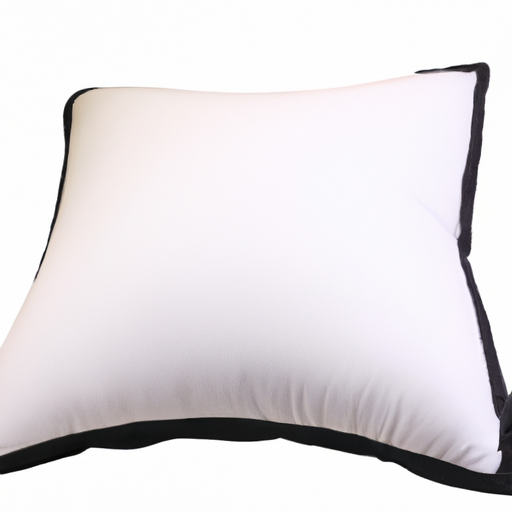For those curious about the effects of sleeping on your stomach on body temperature, it pays to look into the science behind this common sleeping position. While some may enjoy sleeping on their stomach for comfort, there are several pros and cons to consider before making a decision. Understanding how your sleep position impacts your temperature can help lead to a comfortable and restful night’s sleep.
Pros and Cons of Sleeping on Your Stomach
For those who do prefer to sleep on their stomach, there are several pros associated with this sleeping position. The main advantage is that relaxing while lying on your stomach feels like a natural posture and can be more comfortable than lying in other positions. Additionally, sleeping on your stomach may prevent snoring due to the inversion it creates in the neck and throat, allowing for easier breathing throughout the night.
On the other hand, sleeping on your stomach comes with some drawbacks. While it is a natural position for some, it may be uncomfortable for those who are used to sleeping on their back or side. Additionally, it doesn’t distribute weight evenly degrees of pressure-causing body pains in your neck, shoulders, and lower back. And because of the positioning of the neck when sleeping on your belly, your airways may be slightly obstructed which could cause problems with breathing as well as discomfort.
Effects of Sleeping on Your Stomach on Body Temperature
Your body temperature affects your quality of sleep—too much heat can cause restless sleep, while too little can cause uncomfortable chills. Generally, maintaining a comfortable body temperature is best when sleeping. When sleeping on your stomach, air circulation is restricted and may cause your body temperature to increase by accessing stored heat and preventing it from escaping. Due to this, stomach sleeping can disrupt sleep patterns.
Understanding the Science Behind Sleeping on Your Stomach
In order to better understand the relationship between sleeping on your stomach and body temperature, it’s important to look at how each factor interacts with the other. When sleeping on your stomach, your body generally must adjust to the position in order to keep your face pointed outward. This alteration of the spinal column can constrict breathing and limit air flow which can increase core surface temperature as heat builds up.
The Connection Between Sleep Position and Body Temperature
The positioning of certain muscles and joints when you sleep in certain positions dictates blood flow around the body. When lying on your stomach and arching your back, your abdomen and chest are close together, creating more body contact. This restricts air flow, which can lead to increased body temperature. As your body accumulates heat during the night, it reduces your natural cooling response which can cause difficulties adjusting body temperatures during sleep.
How to Maximize Comfort When Sleeping on Your Stomach
If you do choose to sleep on your stomach, there are ways to maximize your comfort and avoid an elevated temperature. Choosing a mattress that evenly distributes pressure and offers plenty of support can help align your body properly when sleeping in this position. Pillows may also be needed to keep the head in line with the spine and provide arch support for the chest and neck. Selecting lighter bedding that is composed of natural fabrics like breathable cotton can also help lower your core body temperature.
Tips for Maintaining a Healthy Body Temperature While Sleeping on Your Stomach
While sleeping on your stomach may lead to warmer temperatures, there are certain tips that can help you maintain a healthy body temperature at night. Setting up a fan to create a circulating airflow helps export temperature-causing heat away from your body. Utilizing cooling sheets, mattress pads, and cooling pillows can help reduce the interior temperature while sleeping by absorbing the heat away from your core. Drinking cold water before bedtime can also lower your core temperature.
What to Consider Before Choosing a Sleep Position
It is essential to consider the effects of different sleeping positions and determine which one works best for you. Experimenting with different positions and routines can help develop good habits and promote healthful sleeping. The best option ultimately comes down to personal preference, but understanding the science behind sleeping positions can help inform your decision when considering body temperature regulation.
Dealing with Uncomfortable Effects of Sleeping on Your Stomach
For those who experience discomfort or increased body temperature from sleeping on their stomach, it is important to take preventative measures in order to achieve a comfortable and restful night’s sleep. Utilizing thick blankets and pillows to maintain an even spinal column or investing in a mattress that promotes air flow by utilizing cooling technologies can help reduce some of the uncomfortable effects associated with this position.
Benefits of Alternate Sleep Positions
While sleeping on your stomach may seem like a more favorable position for some, alternate positions have their own advantages when it comes to regulating body temperature. For example, sleeping on the back allows for maximum air flow while keeping the spine in optimal alignment. Additionally, those who sleep on their side may experience increased comfort as well as an even spread of pressure along their spine—reducing pain in their neck and shoulders.
When it comes to understanding how sleeping on your stomach affects your body temperature, it pays to consider the science behind it. While there are some benefits associated with this position, such as improved snoring and greater comfort, there are cons to consider such as a restricted flow of air which can lead to an elevated core temperature. For those who are considering switching to stomach sleeping as their preferred sleep position, they should take into account its effects on their body temperature and make sure they are implementing strategies to maintain a healthy temperature while in this sleep position.



